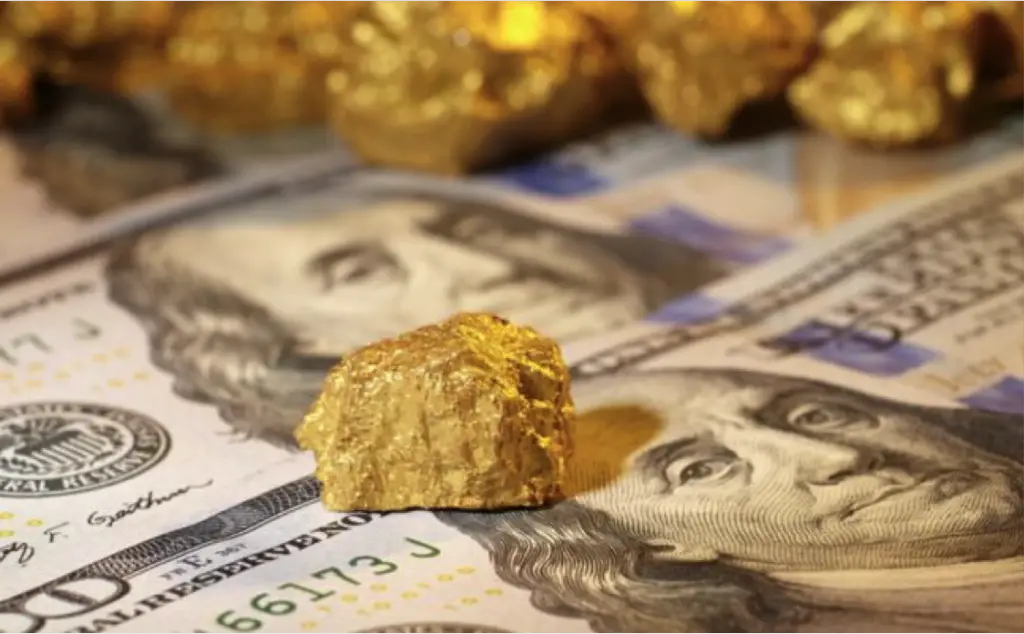 As economic turmoil around the world continues to increase, more and more people are buying gold and silver for wealth protection. Gold and silver are insurance against currency collapse, although some people buy them as investments too. If you’re thinking about purchasing precious metals for the first time, this buyer’s guide for gold and silver will help.
As economic turmoil around the world continues to increase, more and more people are buying gold and silver for wealth protection. Gold and silver are insurance against currency collapse, although some people buy them as investments too. If you’re thinking about purchasing precious metals for the first time, this buyer’s guide for gold and silver will help.
When purchasing gold or silver for the first time, the two biggest questions usually are:
- Where can I buy precious metals?
- Is it better to buy gold or silver?
The answer to the first question is easy: You can buy gold and silver in coin shops, on the Internet, and from jewelers. Like anything else, you’ll need to shop around to find the best deals.
The second question is more complicated because there are many choices, each with their own set of pros and cons.
So, what to buy?
Silver comes in 90% American silver coins — better known as “junk” silver — numismatic silver, and bullion. If you want to buy gold you can buy numismatic gold currency and bullion.
Silver is more popular because of its lower purchase price; however its main drawback is that, compared to gold, you need more metal to store an equivalent amount of wealth. I buy both.
Although this won’t help you determine how much gold and silver you should own, here’s a buyer’s guide for gold and silver. It includes a list of options that will help you solidify your initial purchase strategy:
“Junk” Silver
This consists of American dimes, quarters and half dollars minted prior to 1965. These coins are 90% silver and one dollar of them — for example, four quarters, or ten dimes, or one half-dollar and five dimes — weighs 0.77 troy ounces (a troy ounce equals approximately 1.1 ounces).
Pros: “Junk” silver is overlooked by many people. Many people who believe that a currency crisis is coming prefer these coins because they come in different sizes, and the risk of them being counterfeited is extremely low, which makes them an ideal choice for barter.
Cons: It isn’t 100% silver, so if you aren’t good at math it can be hard to know how much silver you have. If you aren’t careful it can get mixed in with your regular change. Not all places pay fair value on “junk” silver coins, so you have to be careful.
Comment: This is a great place to start if you want to dip your toes in the market.
Generic Silver Bullion
Generic silver bullion is produced at commercial mints and comes in “rounds” or bars of various sizes, from “fractional” rounds of less than 1 troy ounce to bars of 100 troy ounces — and even higher! It is 100% silver. Each round or bar is stamped with its weight and purity. Larger sizes usually have the lowest premiums — although there are exceptions. The largest sizes — 100 troy ounce bars, for instance — may be more difficult to sell, however.
Pros: Ounce for ounce, generic bullion is less expensive than premium bullion.
Cons: They may be slightly harder to sell or barter because some buyers prefer bullion issued by government mints.
Comment: Silver bullion is an affordable store of wealth and the preferred entry point for most first-time buyers.
Premium Silver Bullion
Premium silver bullion is 100% pure silver and is produced by government mints. Examples of premium silver include coins such as the American Eagle, Austrian Philharmonic (my favorite), Canadian Maple Leaf and Mexican Libertad.
Pros: It’s beautiful. Seriously. When bought in a roll (typically 20 coins) you can get them for a smaller premium. They may be slightly easier to sell or barter because some buyers prefer bullion issued by government mints.
Cons: Ounce for ounce, premiums are higher compared to generic silver bullion.
Comment: If appearances matter, then add some to your collection. If a dealer is offering them at a great price, then buy some. Otherwise, I suggest avoiding them because of the high premiums.
Numismatic Silver
This category primarily consists of US silver dollars minted prior to 1936. They are 90% silver and weigh 0.77 troy ounces per coin. Morgan dollars were minted from 1878 to 1921. Peace dollars were minted from 1921 to 1935.
Pros: A handful of dates for both coins are very rare and valuable. Depending on their quality, numismatic silver can have high resale values.
Cons: They carry a high premium. Unless you have rare or high quality coins, dealers are reluctant to pay market value for them.
Comment: If you can get them cheap, then stock up. If you can purchase high quality rare ones at a fair price, then do it. Otherwise, leave them to coin collectors.
Numismatic Gold
These are 90% gold US coins with a mint date prior to 1933. They come in different varieties and sizes.
Pros: They’re an historic addition to any collection — and they aren’t making them anymore. Extremely rare numismatic coins are worth significantly more than their gold value.
Cons: This is a large and difficult market to learn and profit from. American numismatic gold coins carry very high premiums. For those who are unfamiliar with them, it’s hard to verify the quality of a gold coin.
Comment: Don’t purchase these unless you’re a skilled collector.
Generic Gold Bullion
Commercial mints produce generic gold bullion; they come in “rounds” or bars. Like generic silver bullion, it is 100% pure. Generic gold bullion comes in many different sizes. You can buy amounts ranging from 0.5 grams all the way up to a 100 troy ounce bar. Larger sizes typically have lower premiums — although there are exceptions.
Pros: Ounce for ounce, generic bullion is less expensive than premium gold bullion.
Cons: Smaller sizes — for example, 5-gram and 1-gram bars — can carry a 25% premium, which you don’t recoup when you sell. They may be slightly harder to sell or barter because some buyers prefer bullion issued by government mints.
Comment: Gold is the ultimate store of wealth; as such, it’s intended to be held for a long time.
Premium Gold Bullion
Government mints produce premium gold bullion. Examples of premium gold include American Gold Eagles and Gold Buffalos, Canadian Gold Maple Leafs and South African Gold Krugerrands. Most of these coins come in multiple sizes. You can reduce premiums by buying larger-sized coins.
Pros: It’s beautiful. When bought in rolls you can get a smaller premium. They may be slightly easier to sell or barter because some buyers prefer bullion issued by government mints.
Cons: Ounce for ounce, the premiums are higher than generic gold bullion.
Comment: As with premium silver, if appearances matter then add these to your collection. If a dealer is selling them cheap then, buy some. Otherwise, I suggest avoiding them because of the high premiums.
Well that was a lot! I hope this primer provided you with some useful information. If you have any follow-up questions, post them below and I’ll answer them.
***
About the Author: Jesse Gernigin is a coin shop owner and author. He splits his time between the two in an earnest effort to help people live better lives.
Photo Credits: Lone Star Bullion; GoldenMoney; CoinWeek

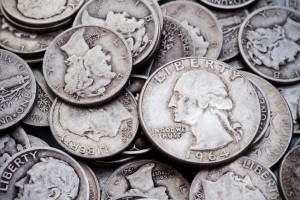
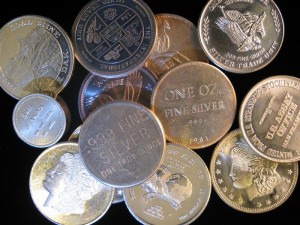
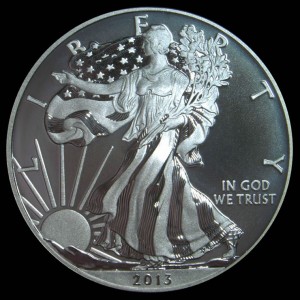
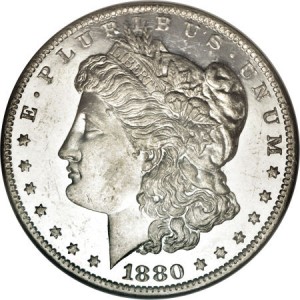
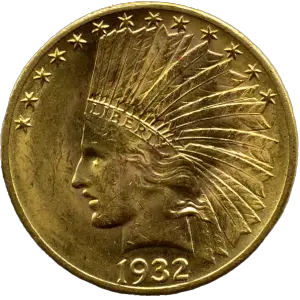
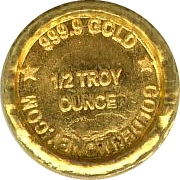
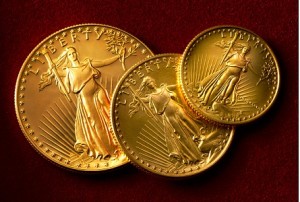
Great list. I prefer the American Eagles silver and gold. The only thing I feel was a great way for me to get started was jewelry. I have always found the cheapest way to acquire gold and silver is at garage sales in the form of jewelry. I then take this and exchange it at pawn shops or jewelry stores for the bullion. You will be surprised how little people know about the jewelry in there own home.
Me too, JB. The Eagles are beautiful coins. The copper content in the gold Eagles gives it a reddish hue that I really like; for those who prefer the bright yellow hue of non-alloyed gold, there are the American Buffalos, which are nice too.
JB,
That’s a great idea regarding the yard sales! I forget that the American public has been brainwashed to think gold and silver are worthless and are no more then pet rocks. I will have to start a hobby of going to yard sales! Surprised the author of this piece doesn’t believe a currency crisis is upon us, maybe it’s an old article.
Jared
It’s a fresh piece, Jared. People like you and me who see a currency crisis coming down the pike are in the minority.
It’s not hard to do the math for junk 90% silver. $1.40 in face value = 1oz silver.
Another con for junk silver is the coins that are worn. If the silver price increases dramatically people will start weighing the coins to find the total silver content. If you are now paying full price based off of face value for worn out slick coins (particularly with dimes and quarters) you won’t have as many oz of silver as you thought if you sell by weight. This is why 50 cent peices are preferrable and usually have a higher premium. They aren’t nearly as worn.
When it comes to junk silver, Josh, this is a very good rule of thumb to use if we ever return to temporary bartering: “junk” dimes will always have enough silver content to buy a loaf of bread (or its equivalent); a “junk” quarter will always have enough silver to buy a gallon of gas.
Awesome tips. We have started looking into purchasing gold coins for the future, together with regular savings and retirement funds, this should help us be safer when reaching old age.
Thanks for the tips! Reading about the different types of gold that I can buy will help me choose the right investment. I can see how buying generic gold bullion would benefit people who don’t have a lot of money. That seems like a type of gold that I would buy since it’s less expensive than premium gold bullion, although I can also understand why buying premium would be more advantageous since it would be easier to sell to buyers who prefer it.
I collect coins and sometimes I run into a silver or gold coin. So I go the coin shops, the internet, or even jewelers to see what I can find. Those are really the best places to go.
I loved reading this post, Jesse! I’m glad that I stumbled upon it because I’ve been thinking about buying gold. I think you’re absolutely right: you want to make sure that you’re buying the right kind of gold. I’ll be sure to follow your suggestion by purchasing gold bullion. Thanks for the great tips; you’ve been very helpful!
I’m glad your seeing gold bullion as an opportunity. I’d pick a price, high and low, and invest once the ups and downs have hit it.
A lot of my friends have been talking about investing in silver or gold, and I have become interested in doing it too. That being said, you talk about how silver is more popular of an investment because of its lower purchase price, however, I can see how buying a bit of both could help you to have a more solidified investment. Overall, I think that adding more unique investments like these to your financial plan could help you to ensure that you’re protected and you’re financially secure. Thank you for all of your insights and suggestions!
Lauren, precious metals should be considered, first and foremost, insurance … as opposed to an investment.
Excellent introductory article on gold and silver. This is a fantastic resource for those looking to get their feet wet with selling.
Thanks for the post. Gold is great asset of doing business. But there are different forms of gold when choosing gold.
And thanks again for the nice post”
Generic silver bullion really is a good point to start with for an entry collector. I have started collecting coins and really enjoy the different types I find. I am always looking for great deals. What is the most expensive coin you have ever bought?
My most expensive coin is a St. Gaudens double eagle. Beautiful coin.
The favorite coin that I ever bought, however, is my Indian head eagle. I just love the design.
This is some great information, and I appreciate your point that premium gold bullion is easier to sell or barter. I’ve been thinking about purchasing some of my first gold, so I want to be sure my investment is worthwhile. I’ll definitely look into buying premium bullion so it’s easier to sell or barter later on. Thanks for the great post!
After much thinking, I made my first investment in generic gold!! Afterwards I was really surprised, because the price went up drastically on the same item for sale. As it continues to rise so does my happiness that I made the purchase. But, also my concern for where to store it safely… do you have any suggestions?
Somewhere where nobody will find it.
I really like your tip about doing the math on your American dimes, quarters, half dollars so that you know whether a not a place is paying fair value for them. My brother always makes sure to weigh his “junk” silver before he takes them in to sell them. I will be passing these gold and silver buyers guide to my brother.
Just for fun … Do you ever store any of your brother’s silver for him?
If so, that would make you your brother’s keeper …
Sweet blog, Len! I found it while searching on Yahoo News. Cheers!
Thank you. Glad you like it, Penny.
Thank you for this. I’m kind of interested to learn why these goings were made and if they were just made for collectors.
Some years ago, I found some very old radios in a barn. They were obviously high-quality in their day and had quite a few silver connections. Silver is noted for its low electrical resistance and resistance to oxidation,
But that’s like still finding valuable old cars in barns. Getting rarer every day.
Len, is it true the government cannot take “pre-33” gold?
Don, at the moment it is legal to own gold of any kind. I think you are referring to FDR’s Executive Order that made it illegal to hold gold in the continental US, or maybe the exemption placed in the related Emergency Banking Act that exempted rare collectible gold coins. In any case, some people believe if they try to confiscate gold again, a similar exemption will be put in place.
For what it is worth, I read an article that claimed only about one in three people actually complied with FDR’s gold swindle; and the government did not actively go door to door looking for gold — probably because the consequences weren’t worth the risks involved.
Anyway … I call it “FDR’s gold swindle” because, after the confiscation (those who complied with his dastardly order received Federal Reserve notes at the rate of $20.67 per ounce), he then raised the dollar price of gold by almost 70% and the government kept the profits.
People’s trust in government has been low in recent years:
https://news.gallup.com/poll/5392/trust-government.aspx
IMO, the people will not turn in their firearms or their PMs.
We had a family member who was a numismatic dealer, he lived by the motto buy low, sell high. He had two primary tactics for getting inventory, go to estate sales and make offers to people who aren’t expecting them.
When people hear estate sale, they think of professional auctioneers and big crowds on some high-end property. But a vast majority of them are more like garage sales, and the people running them are family members who usually don’t have clue that those Morgan dollars in grandma’s jewelry box are worth something.
The other tactic, making offers to the unexpected, usually involves being in front of someone for another type of transaction.In this case, it was TV repair, which was a part-time gig. He would finish the repair and say ,”do you have any old stamps or coins you might want to sell? He would reduce the bill, in effect making the exchange a barter (and off the books). He build up a huge chunk of his inventory this way. The cool part is that most people dont have a clue as to what the spot value is. You don’t need to be a numismatist or a coin collector, you just have to know the weight and composition (silver pre 1965) of the respective coin and make sure you are offering below the spot value .
So true, Stacy. A little knowledge goes a long way. Thanks for sharing that!
This was REALLY helpful! Me and my uncle are thinking hard about buying precious metals. I’ll make sure I pass your tips along to him too!
Great article.
Len,
What are the transaction (not storage) costs like for Gold and Silver? For example, if you were to try and buy a used car and then resell that same used car to the same dealer you’d find yourself out of pocket at least 15% of the value. For most stock options you are going to loose at least 10% on each side (one of the reasons to hold them to expiration!) , but for most stocks it is only a penny per share. Am I correct to guess that most dealers have big differences between their bid and ask and that the person to person market is fairly thin due to the weight of these products?
This is an interesting read about gold vrs RE: http://danielamerman.com/va/GHratio.html
I liked Len’s comment that holding gold is an insurance plan as opposed to an investment. And owning a home outright is the same. And if times are tough like my older friend lived through, his folks rented out a room to one of their employees.
I have a rental and will probably pick up another in the near future. No financing involved. If times are tough for my family they will always have a place to go. When my wife and I pass on the property will be dispersed to our children who have the option to split it up 3 ways, someone buy the others out, or keep the house we live in as a vacation home. Or they can sell it all and buy gold!! 🙂 The other thing is how to put a value on a home. A home is a special and safe place for people and their families. I guess it feels good to have a safe full of gold coins hidden away, but you get a similar cozy feeling about no debts, arable land, tools, skills, etc etc….and hope for luck and good health. Cheers
“I guess it feels good to have a safe full of gold coins hidden away, but you get a similar cozy feeling about no debts, arable land, tools, skills, etc etc … and hope for luck and good health.”
Aside from that obvious straw man, you are inferring (incorrectly) that the two are mutually exclusive. They’re not.
Not sure about the rest of your comments either.
Gold is wealth insurance; real estate is not.
Gold is money; real estate is something you buy with money.
Gold’s purchasing power remains relatively constant over time and can never go to zero (thus, its insurance attribute); the same can’t be said for real estate. If you don’t believe it, just ask anyone who has bought a home in parts of Detroit.